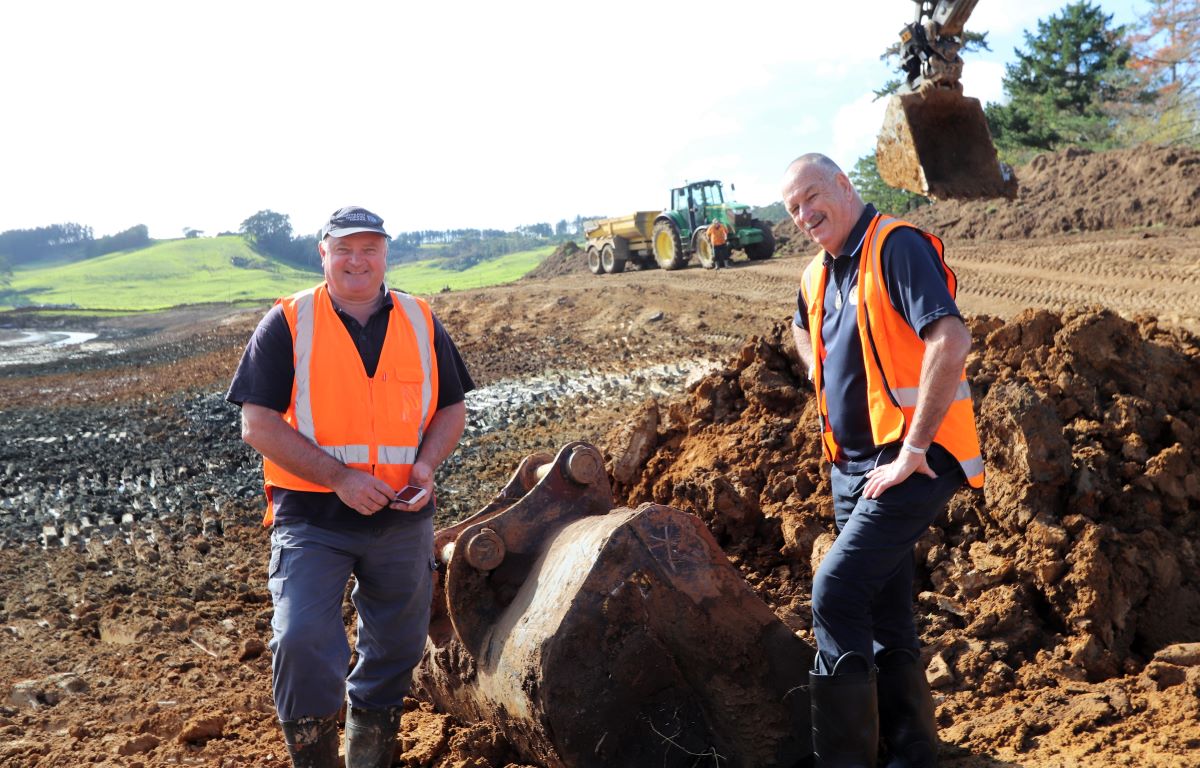$3 million Awanui 2020/21 flood works underway
27 Nov 2020, 9:08 AM
The start of a third construction season is underway for the Awanui flood scheme with just over $3 million expected to be spent over the next several months and the upgrade overall now expected to finished years ahead of schedule.
Colin ‘Toss’ Kitchen, the Northland Regional Council’s Te Hiku representative, says the council is part-way through a planned eight-year, $15M upgrade originally expected to have been carried out in stages until 2027.
However, he says a ‘very welcome’ $12.5M grant from the government as part of its Covid-19 recovery response package – the bulk of it destined for the Awanui scheme – means the upgrade should now be complete in just three more years instead of the six earlier envisaged.
Until now 70 percent of the upgrade has been funded by ratepayers Northland-wide via a regional flood infrastructure rate and the balance funded locally through the targeted Awanui River Management Rate.
Councillor Kitchen says as well as dramatically shortening the time needed to carry out the upgrade, the government funding would also lessen much of the associated burden on the NRC’s ratepayers.
“Last construction season we did about $1.1M of work at Awanui, but we have just over $3 million planned for the new work season, $4M scheduled for 2021-2022 and another $5M (which should mark the completion of the project) for the year after that.”
Councillor Kitchen says the 20/21 construction schedule will involve $3,050,000 of works. These include earthworks for southern spillways, for the Lower Whangatane Spillway and at Allen Bell Park, construction of the ‘Milky Way’ floodwall near the SH1 Waikuruki Bridge, scour protection at Church Rd and various streambank planting and revegetation.
Much of the Awanui scheme was built about a century ago, and until recent years the NRC’s attention had been on much-needed maintenance and more immediate repairs.
“The upgrade programme is designed to help future-proof the scheme (including predicted climate change impacts) as well as deliver a considerably higher level of protection for Kaitaia and surrounding areas.”
Councillor Kitchen says flooding is Northland’s most common natural hazard and floods will likely get more intense as climate change continues.
“That will increase the risk to communities in flood-prone areas and to critical infrastructure like our roading network making it vital we collectively do what we can now to adapt, to protect lives and livelihoods into the future.”
The regional council has previously warned that without the added protection the Awanui scheme upgrade will offer, a large flood in urban Kaitaia could cause tens of millions of dollars in damage and potentially put lives at risk.
The upgrade is designed to protect urban Kaitaia in a ‘once in a century’ type flood and a 1:20 year event in surrounding rural areas.
Councillor Kitchen says among the scheme upgrades carried out over the past couple of years have been repairs to a roughly 500-metre stretch of undermined stopbank behind Te Ahu and construction of a new emergency spillway opposite Kaitaia’s slow-moving Bell’s Hill slip site.
The most recently completed work was construction of a crucial new 400-metre long flood scheme spillway behind Juken New Zealand’s Kaitaia triboard mill.

Regional council Kaitaia Area Manager Peter Wiessing, left, and Cr Colin ‘Toss’ Kitchen check progress during previous upgrades to the Awanui flood scheme in mid-June this year. A third upgrade construction season – expected to see roughly $3m of new works over the next several months – has just begin.
